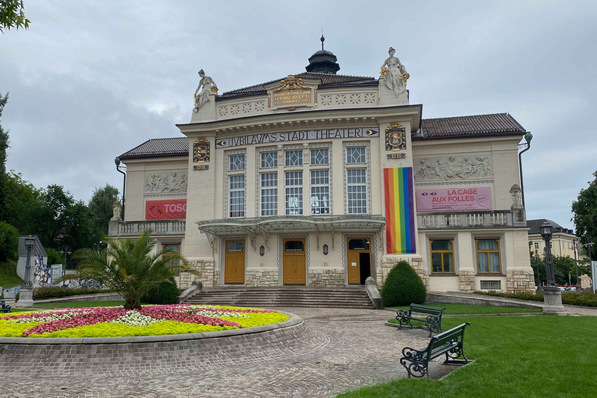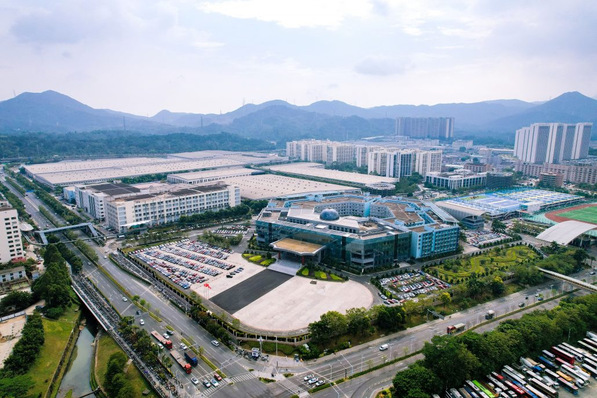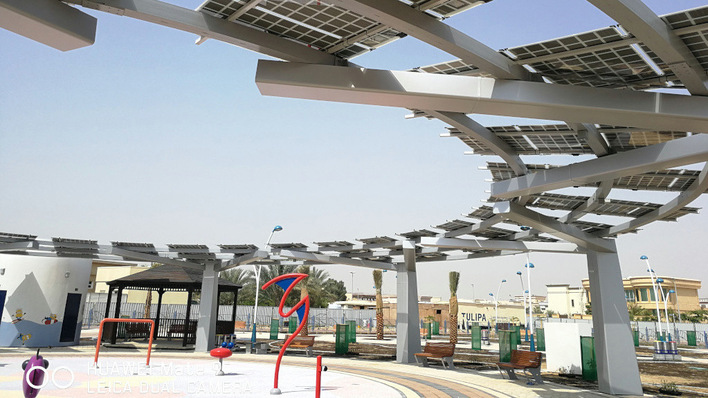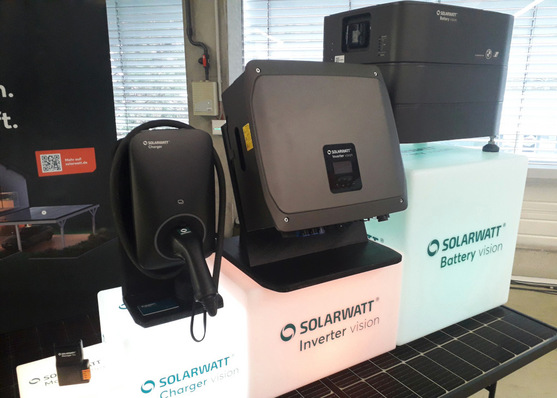Read here Part one: High-speed Installation – 200 Megawatts in 8 Weeks
From a technical perspective, the company focusses on innovation. One year ago, they acquired the solar company Haticon, and so now the challenge is to match the technical units and combine the strengths of both companies. This is the responsibility of Mark Redel, head of development in Rangsdorf. He explains: “This concerns both the structural foundations and the different rail systems. In 2016, we will probably not yet merge the two product lines, but keep them separate.”
“However, going forward we will successively marry the best approaches and ideas from both product lines into one product.”
Mounting Systems uses a system of symmetric rails that can be mounted with T-head bolts (for laminates) or a clicking element (for framed modules), such as the convenient inside click, which allows free mounting of modules: vertically or horizontally.
Haticon’s concept was more built around light-weight rails, as the geometry of the outside click required a different approach. The rail’s profile is almost square. From a statics standpoint this may be ideal, but it only allows to mount the roof hooks on one side of the unit.
Push innovation further
This process of technical optimisation and merging goes on, even as the price pressure remains. For flat roof systems, Mark Redel estimates the decline in prices “to have been around 20 percent last year.” He has been with the company for six years and was involved in developing the Alpha-Plus range. “One thing is clear: In the long run we cannot sell below cost.”
For that reason, sorting out the product range is absolutely critical – a high-priority strategic decision. In Rangsdorf, ten engineers are involved in researching innovative mounts, along with three or four in Sacramento, despite the fact that in them there are very few aspects where cost cutting is still possible. “We will have to continue to offer high-quality solutions,” says Redel. “In order to keep improving our products, we are in close contact with our customers.”
Despite the slow years, Mounting Systems have never stopped making developments. In 2014, they introduced the low-ballast flat roof system Lambda Light, and for the 2015 Intersolar trade fair, Lambda Light Plus. To make mounting easier, the protective matt was already applied to the rails.
Bringing down costs by using less material or reducing production depth in the factory is no longer possible: The savings potential in profiles and their thickness has been taken to tits limit. One way to make mounting the system faster is to pre-assemble more and to use fewer small components.
Novel Tracker on the way
In the UK, the company has gained some first experience with the new Sigma System, which is intended for greenfield applications. The steel frame allows clickable module clamps at any point along its length. “Drilled holes are no longer necessary,” Mark Redel explains. “We use clamps for everything. That means you can vary the spacing between modules or exchange them freely. Pre-drilled holes do not allow that kind of freedom, because they determine the distance between the mounting points.”
A novel mono-axial tracker system is currently in development. In times of self-consumption and battery storage units, there should be new opportunities for such tracking technology – for both commercial and industrial customers. However, the line between technological excellence and price will once again be a very fine one:
Prices have halved in the last three years. For this new tracker, Mounting Systems have entered into a partnership with Hilber Solar. The moving mount is designed for mounting industrial modules of 72 or 96 cells and to work using as few actuators as possible, because those are what drive up the cost of tacking systems. A prototype is already being tested. The idea behind it is quite clever, but we will say no more at this point. Too many details have yet to be decided, before the new tracking system can be unveiled in June at the Intersolar in Munich. (Heiko Schwarzburger)







